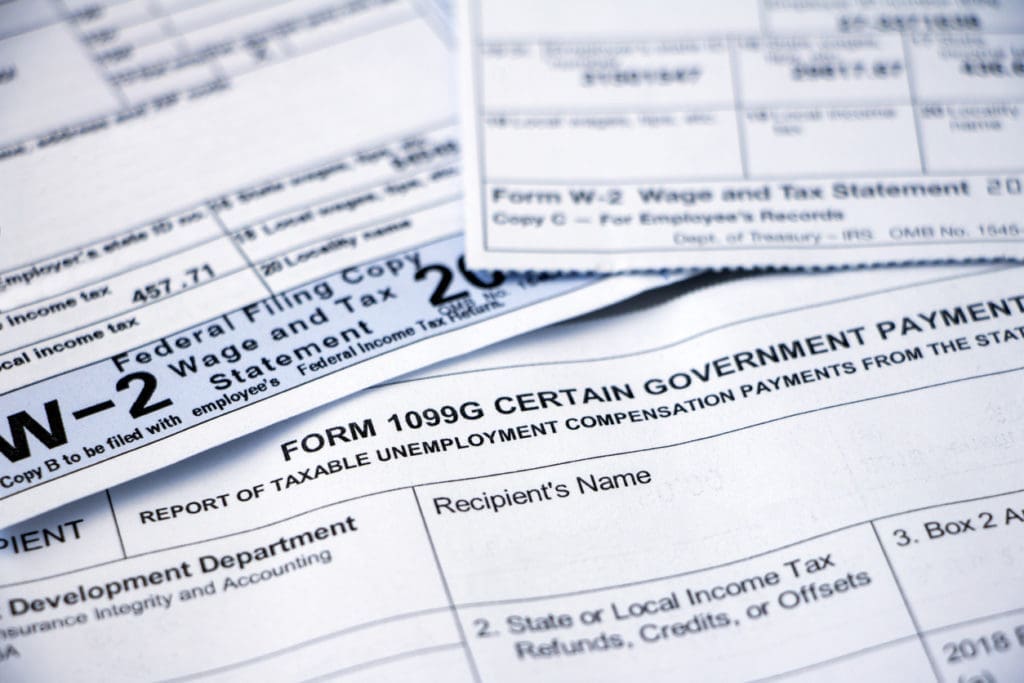Can You File Two W2 Forms? A guide to All Things W2
When tax season rolls around and you’re drowning in paperwork, it’s difficult to remember which tax forms you’re responsible for filing. In the midst of this overload, you’ve probably wondered “What’s the difference between a W2 and W4?” and “Can you file two W2 forms?” And while the short answer is yes, it’s important to understand the intricacies of income reporting to avoid an IRS audit and keep your employers (and employees) satisfied.

A Guide to All Things W2
So what is a W2? Used when filing both federal and state taxes, a W2 reports an employee’s income and the tax dollars withheld from their paycheck along with any fringe benefits such as insurance or dependent care benefits. Dispatched by employers no later than January 31, W2s are used to track employment income from the previous year.
Employer’s Responsibilities
If you are an employer, your W2 responsibilities begin and end with payroll preparation. Listing income along with the amounts set aside for taxes and benefits, W2s are a crucial component of your employees’ tax filings, and you must provide them with their forms on or before January 31. You must also send duplicate forms to the Social Security Administration so they can verify your employees’ taxes. The brunt of the W2 workload falls on your shoulders, and it’s essential to fill out these forms promptly and accurately.
As a single employer, you are only required to submit one W2 form for each employee, regardless of whether they’ve worked in numerous roles. However, if company ownership or payroll provision shifts within the calendar year, multiple W2s may be required. It is the employer’s responsibility to kickstart the W2 filing process; failure to accurately and swiftly complete employees’ W2 forms inconveniences not only them but also hurts your company.
Improper filing can also put quite a dent in your finances, depending on company size. If your submissions are a month late, the IRS can fine you a minimum of $50 per W2 form, capping off at $199,500 for small businesses and $571,000 for larger employers. The fees only increase from there, skyrocketing into the multi-millions for forms submitted on or after August 1. If you know you’ll need extra time to file and distribute your W2s correctly; you should file Form 8809 to request an extension and avoid unnecessary fees. However, keep in mind that extensions are only granted in the case of “catastrophic event[s]” such as “federally declared disaster[s]” or other extenuating circumstances, so the best way to avoid late fees is to get ahead of the problem with proper payroll preparation.
Filing W2s properly is a time-consuming process, and you may not have the time or resources needed to complete this task adequately. The best way to ensure that all payroll-related forms are correctly completed and submitted is to outsource payroll processing to a PEO or a professional employer organization. By hiring a PEO to handle payroll processing, you ensure that all of your necessary forms are filled out and submitted correctly, limiting mistakes while also freeing up your time for tasks related to your business. In addition, PEOs are well-versed in financial management and human resources, filing forms efficiently and correctly to keep the IRS (and your employees) satisfied.
Employee’s Responsibilities
As an employee on the receiving end of a W2, your responsibilities are a bit lighter. For you, a W2 essentially functions as a wage and tax report outlining your gross earnings and attendant tax and benefits deductions.
Because your W2 is a core component of your tax filings, all of the information on your form must be correct. Therefore, look over your W2 for errors and oversights. For example, make sure your name is spelled correctly, and your Social Security number isn’t missing any digits. You should also double-check your withholding amounts against your last pay stub to make sure the numbers match up.
However, if you’ve changed jobs this year or taken on another part-time job, your W2 filing process looks slightly different, and you should receive one W2 from each employer. With multiple forms to contend with, you’re probably wondering, “Can you file two W2 forms?” The short answer is yes, but keeping track of all of your W2s requires organization. For jacks-of-all-trades who work several seasonal jobs rather than a single salaried one, W2 filing can get a bit more complicated. Before you submit your tax return, make sure that you include all of your W2s from all of your part-time jobs on the front end. Though you can amend your return if you forget a relevant W2, the process can be quite a headache. To save yourself the trouble, refer back to your yearly employment history and cross-reference it with the W2 forms in your possession to make sure nothing is missing.
Save Time and Money with Canal HR
W2 filing is a crucial component of your tax responsibilities for employers and employees alike. But for employers, in particular, tax filing season requires substantial work on the front end. With both the IRS and your employees counting on you, the pressures of this detail-oriented work can quickly become overwhelming. To ensure that your W2s and other tax forms are filed quickly and correctly the first time around, consider outsourcing your W2 filing to a PEO like Canal HR. As a PEO that assists hundreds of small businesses with their human resource needs, Canal HR provides expert W2 filing services tailored to your business. Canal HR helps you lose the headache and focus on more important tasks by streamlining your tax filing. In addition to freeing up your schedule, a PEO can help you save an average of $1,775 per employee, eliminating unnecessary costs while facilitating growth and development. So stop spending valuable time and money on extraneous W2 filing, and contact Canal HR today to streamline your HR operations.

